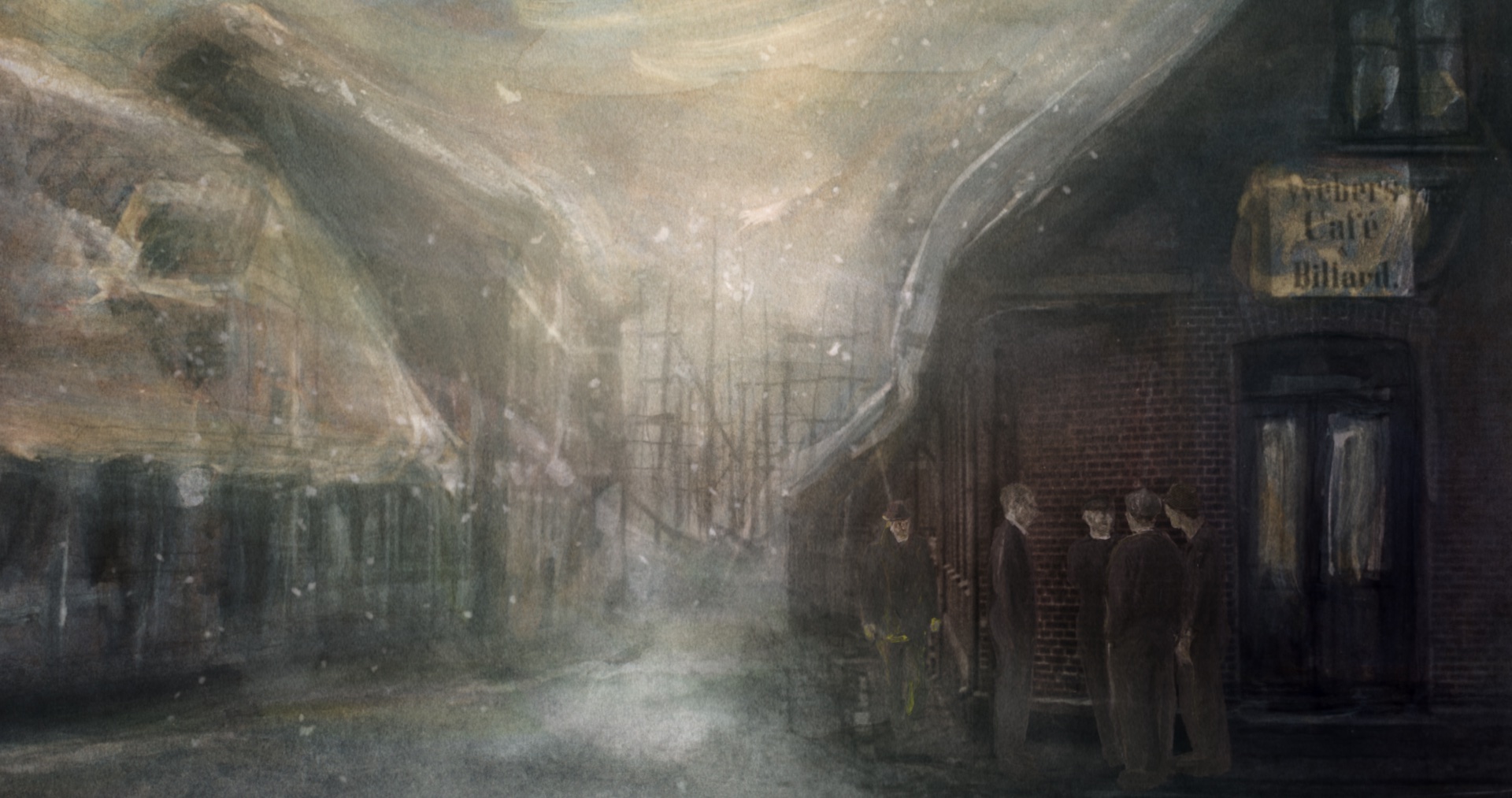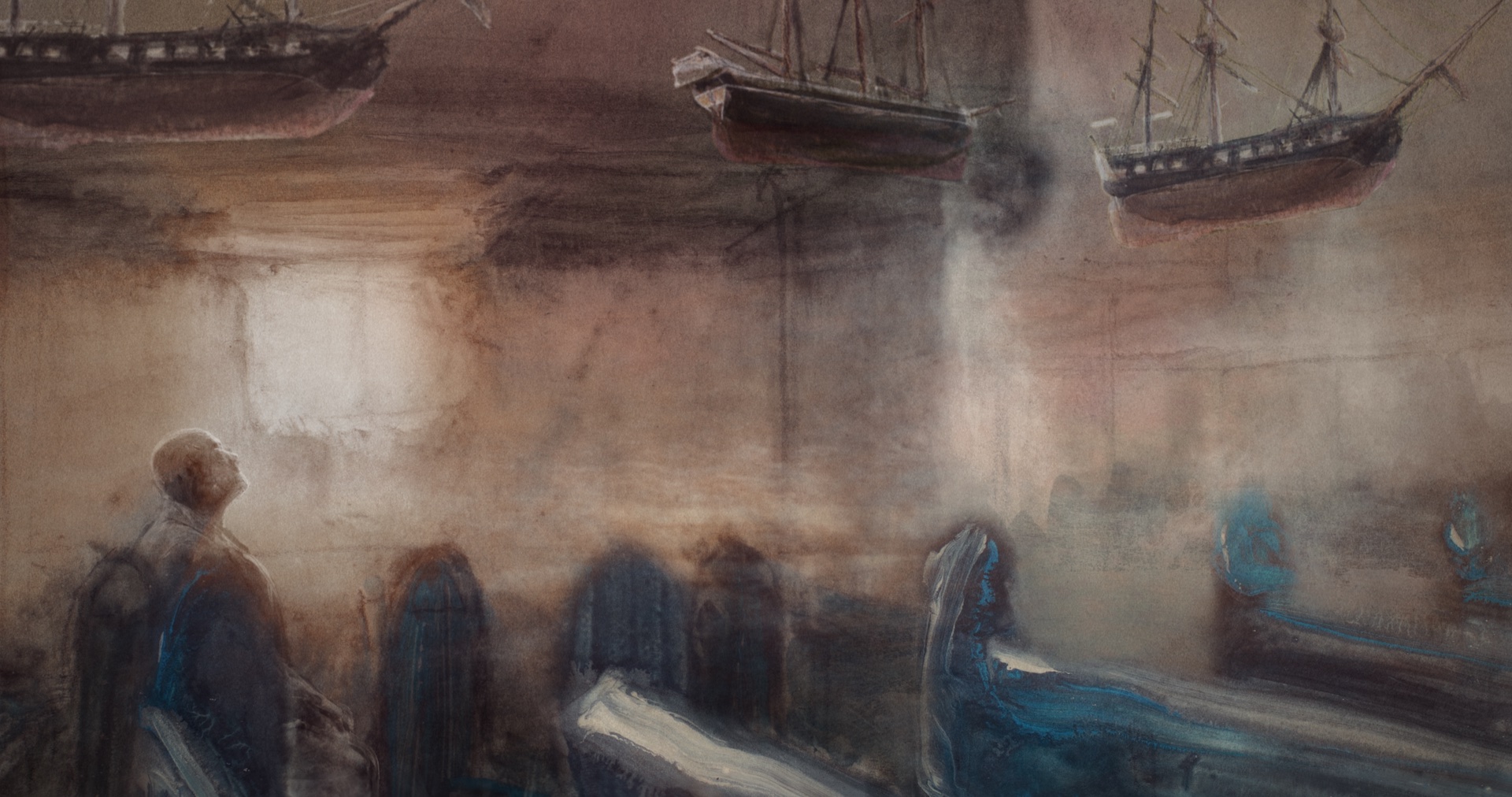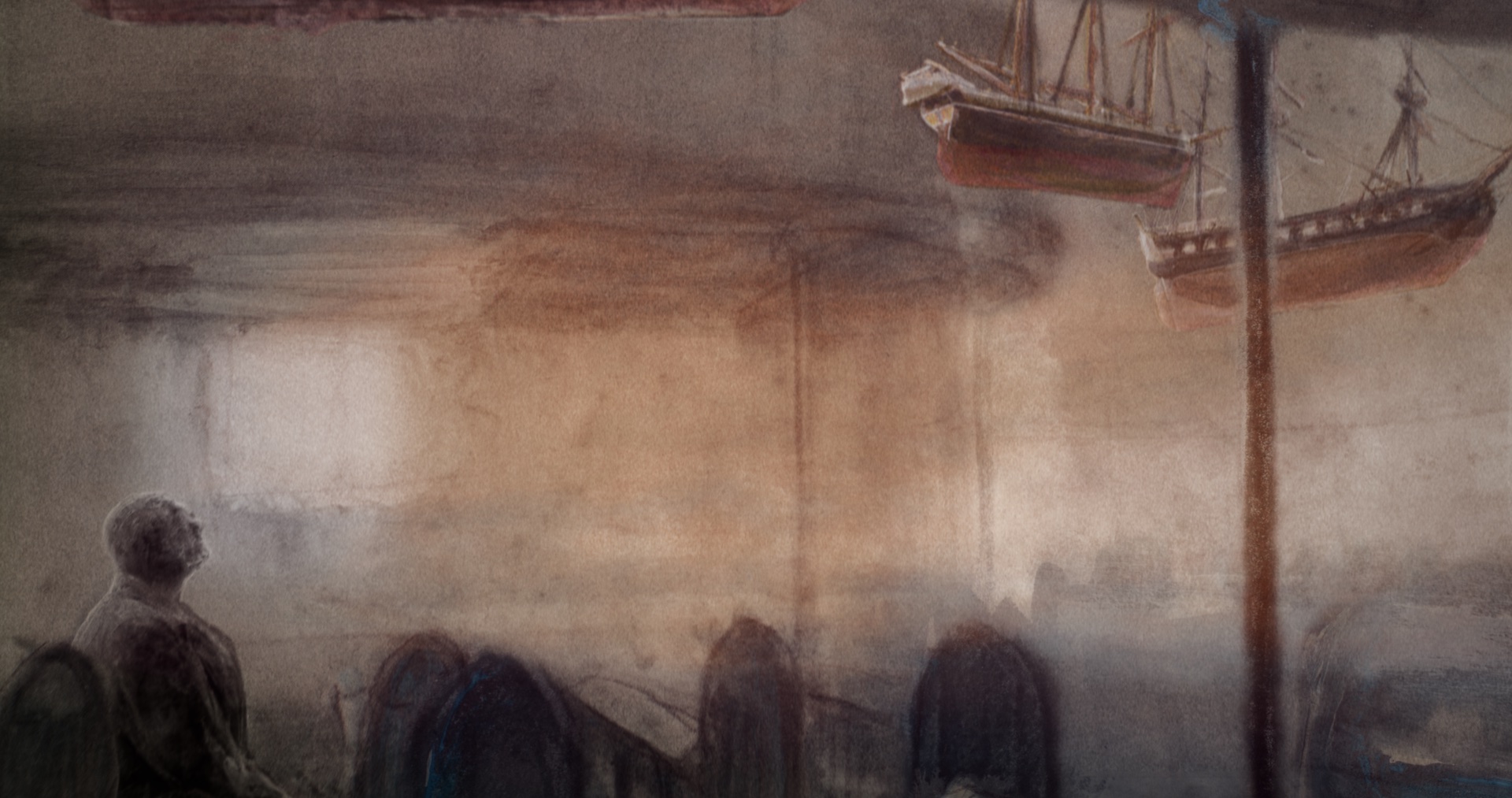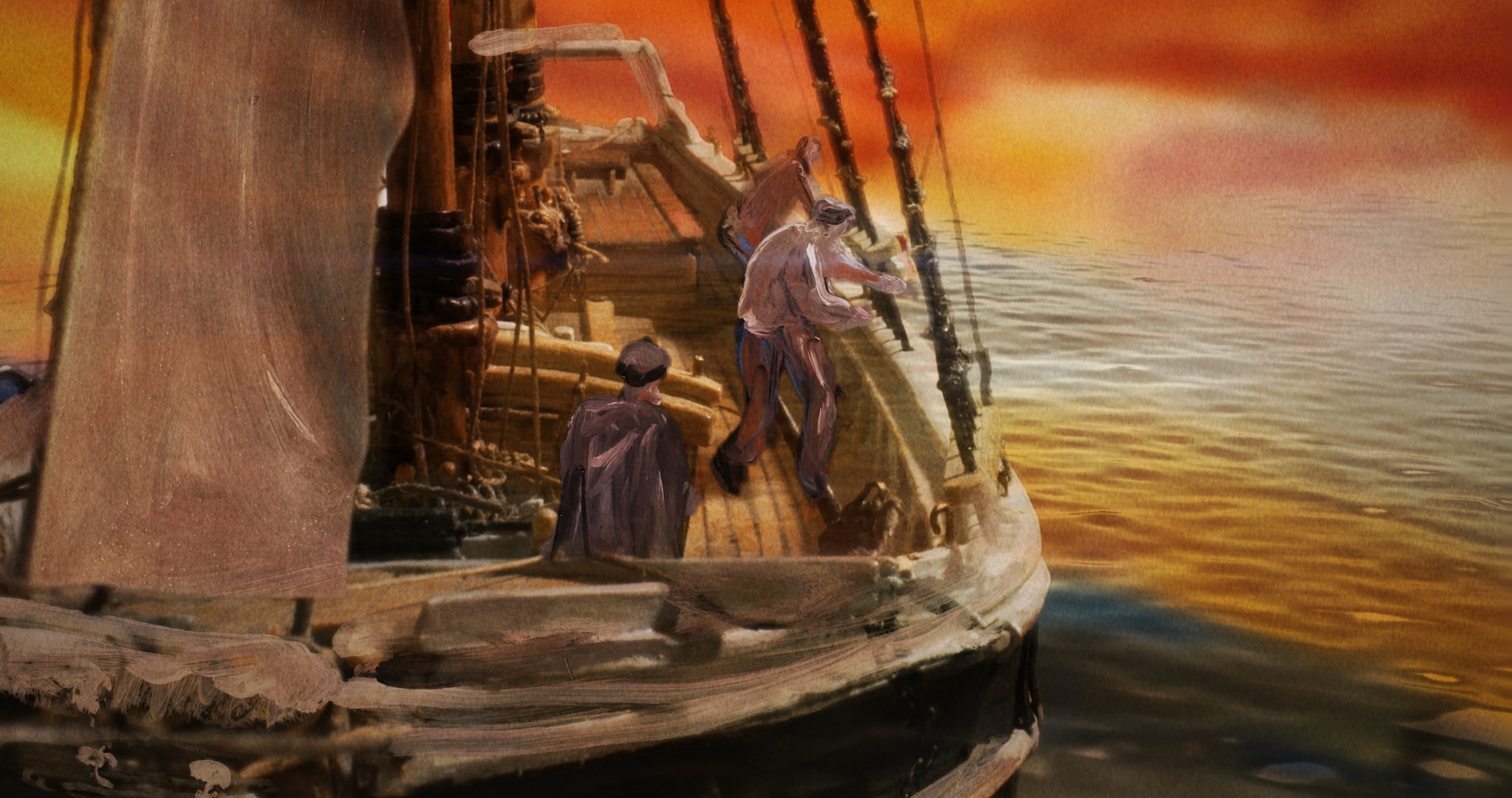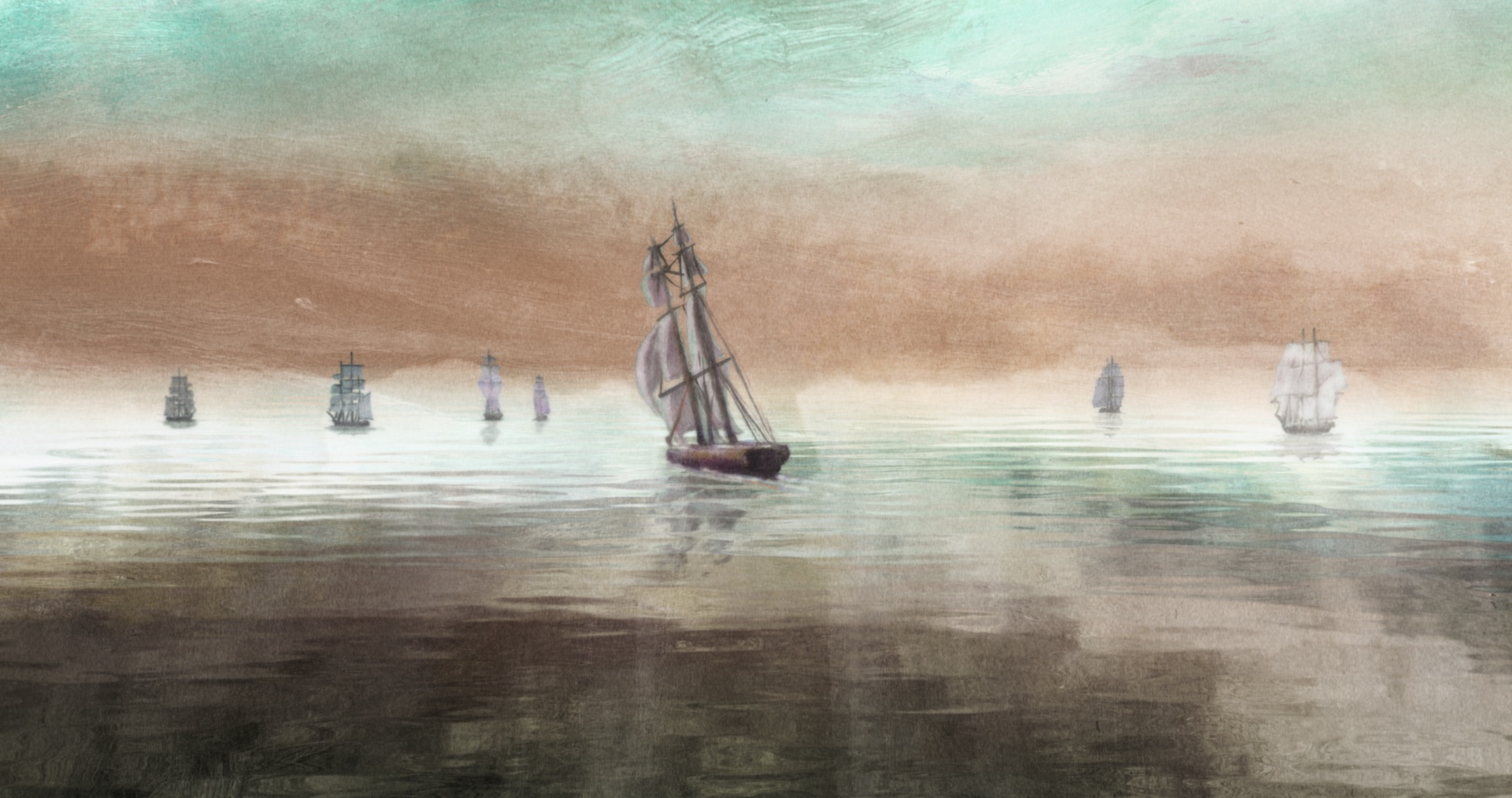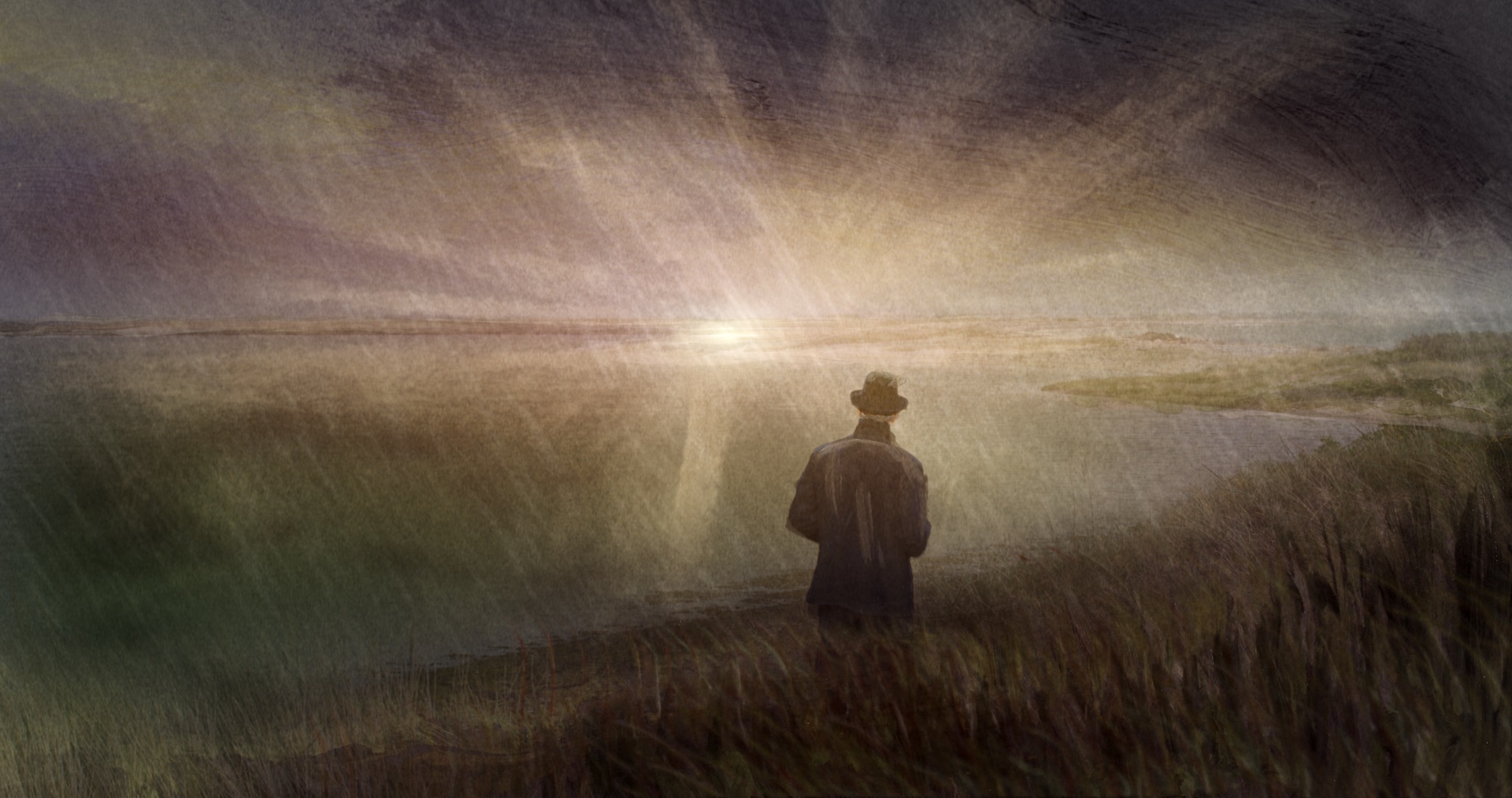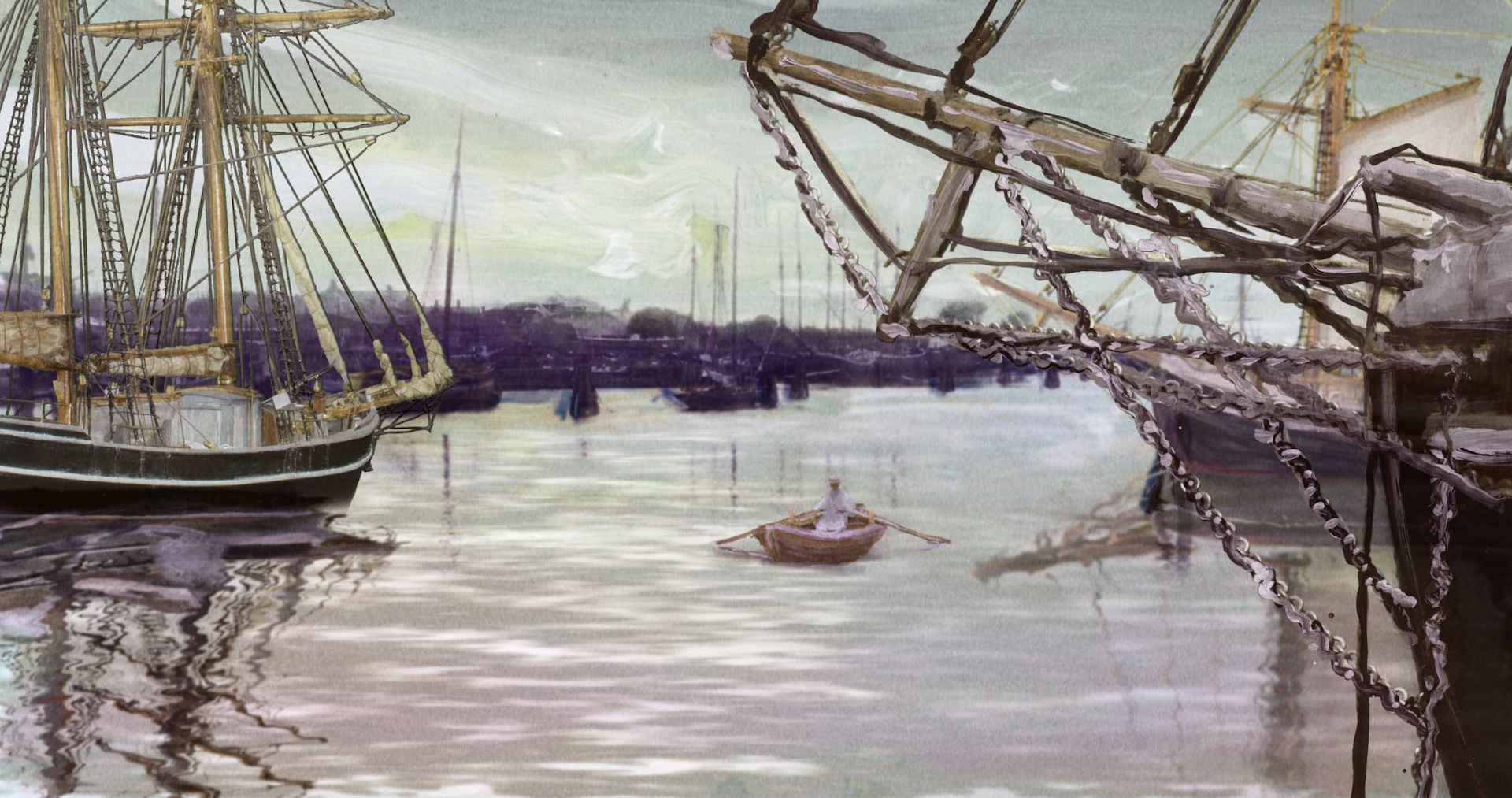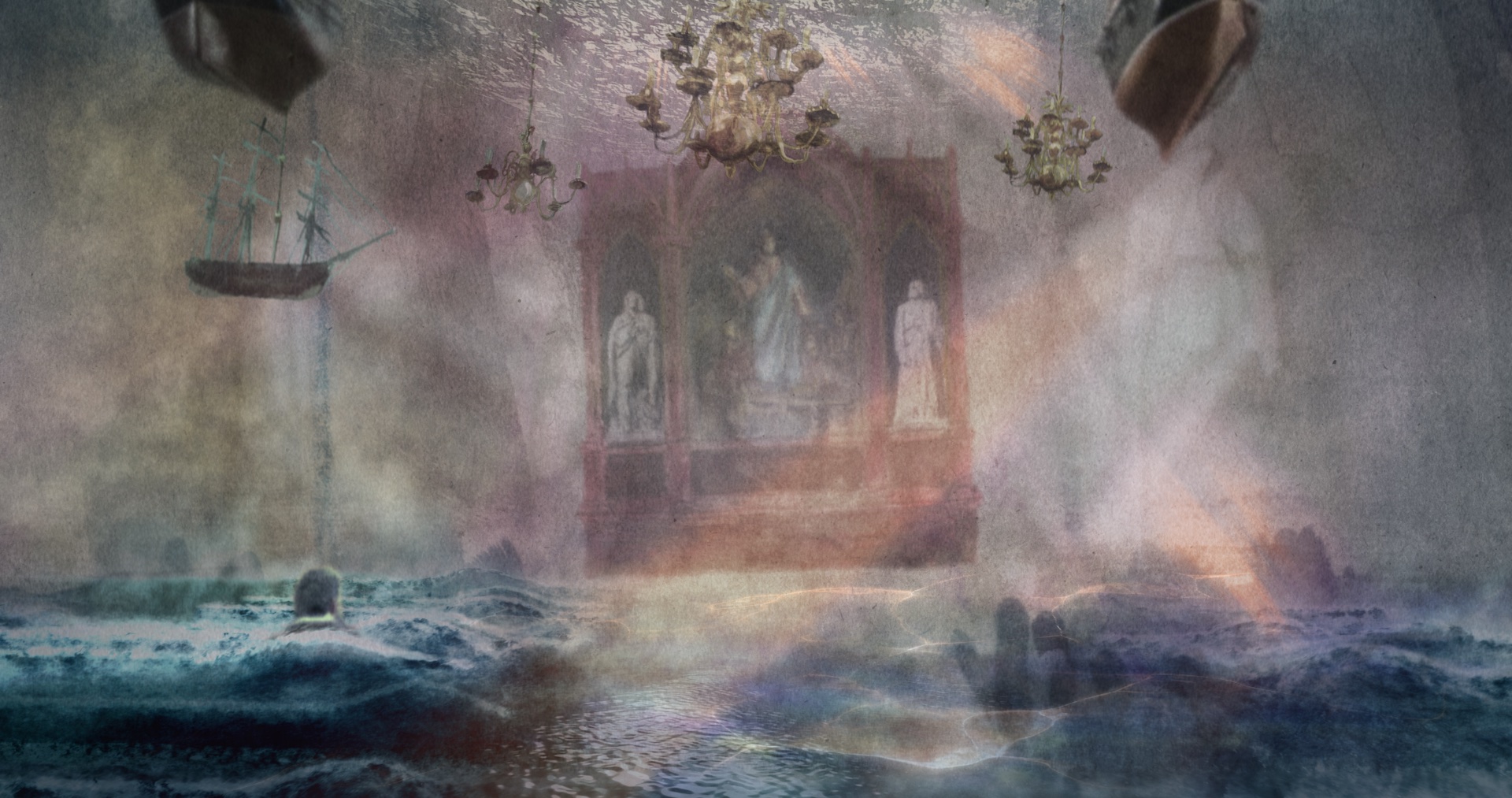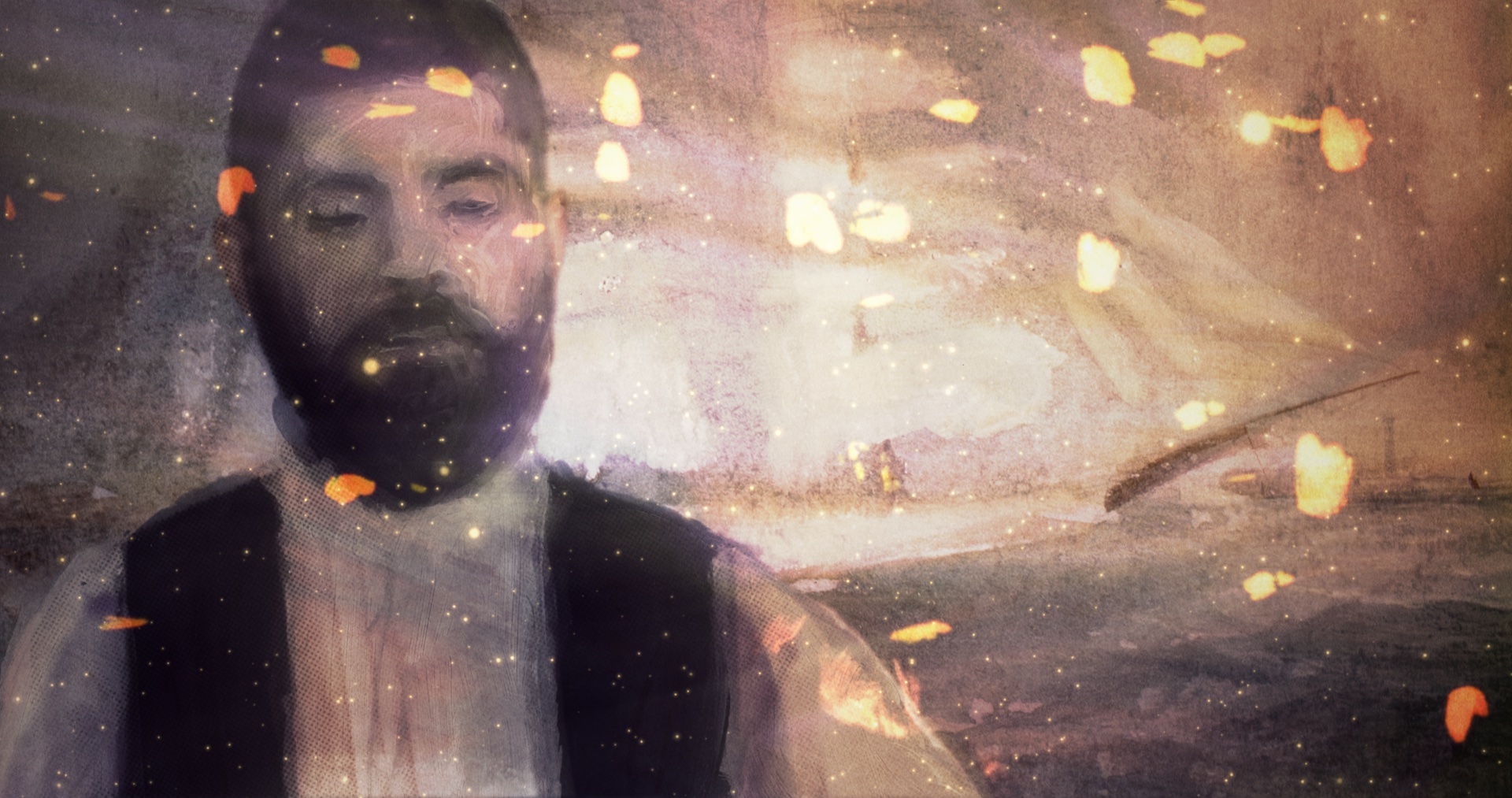Going deep with The Drowned
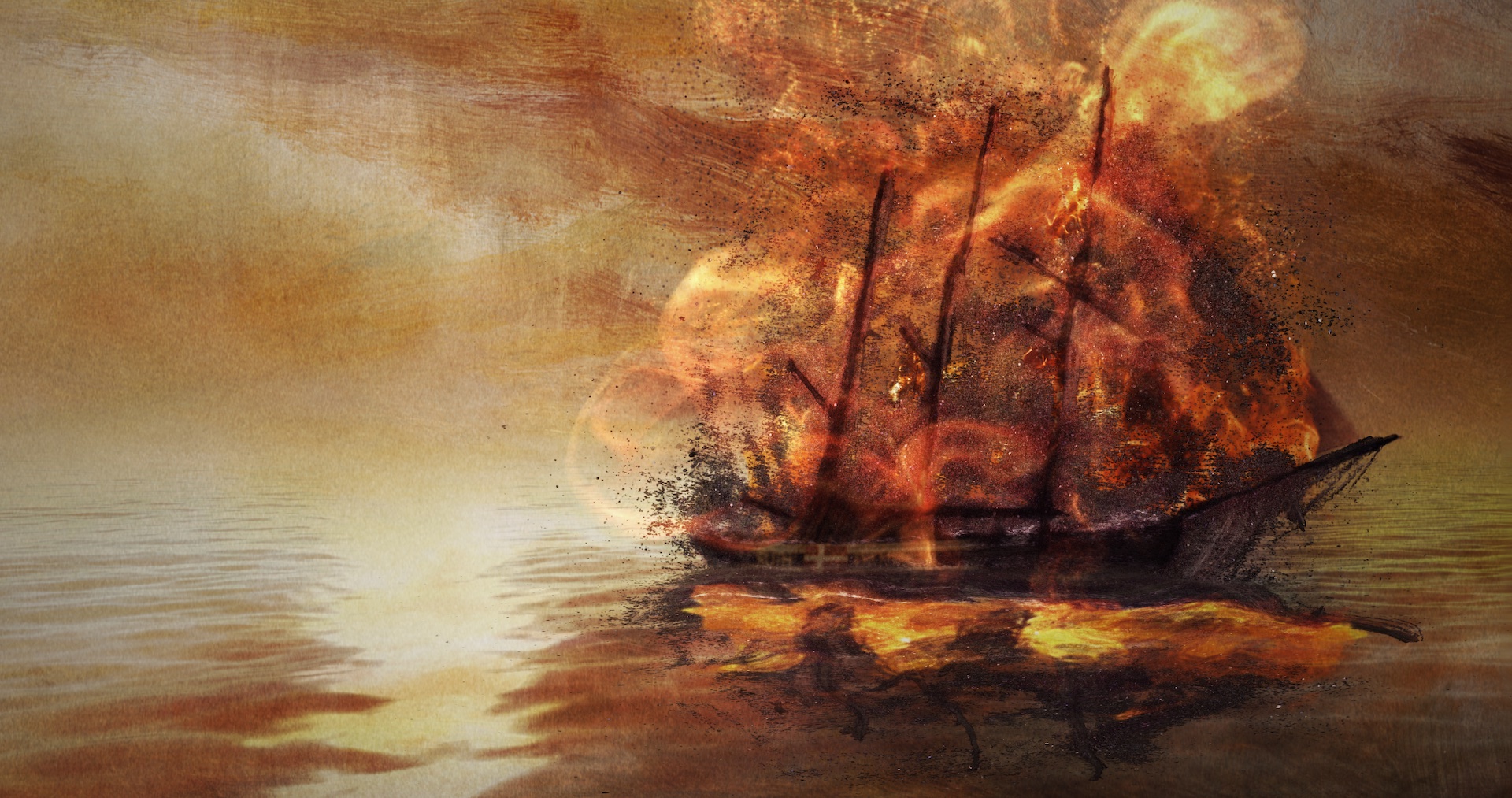
“You can drown in many things, and this film includes all of them”
Going Deep With The Drowned
The animated short film The Drowned is a beautiful exploration of dream-like visions and forms of mourning that pays homage to the people and history of Marstal. Inspired by a critically-acclaimed novel, Luc Perez’ film manages to be historic, surreal, and deeply personal at the same time. In this article, we take a look at the inspiration, production, and future of this gorgeous film.
Luc Perez’s new animated short film The Drowned (original title, Den Druknede) was inspired by the 2006-novel We, the drowned, by Carsten Jensen. The novel and film are about the seafaring people of Marstal in the early 20th century in Southern Denmark. It’s about the lure of the ocean, and men who sail and trade and fight there, and the women who maintain life and hope and build a future in the village.
The film takes place during a single chapter of the book, where aging captain Albert Madsen has seen a terrible vision of the future. The story moves between present and past, dreams and realities, possible futures and impossible imaginings, and Perez’s film has a dreamlike, surreal quality that perfectly reflects Madsen’s internal life.
AN HOMAGE TO MARSTAL
Born and raised in France, Luc Perez has been living in Denmark for 20 years. Jensen’s book opened his eyes to a whole new, often overlooked, area of Danish military and maritime history. But Perez has a connection with the small town of Marstal that actually goes much deeper than that. He says:
“I had a very vivid dream about a seaside village. Naturally, I assumed I had dreamed of some little village in France, but when I went to Marstal I was astonished to realize that it was the town of my dream. A few years later, when Jensen’s book about the town was published, my wife gave me a copy. The book had everything I loved: the story of Marstal, the vivid imagery and complex emotions of the characters, and the magical realism I love in authors like Gabriel Garcia Márquez. I had to make it into a film.”
Jensen gave Perez unfettered rights to use the book in his film, without requiring any author input or approval. Like the book itself, Perez strove to make his film as accurate as possible, while still conveying the surreal, dream-like quality of the story. The film reflects the actual streets and homes of Marstal, and local people served as extras and background characters. The characters speak in the local accent, and the calligraphy is the traditional cursive of the time period. Perez wants the people of Marstal to recognize themselves and their home in every image.
Perez’s complex, multi-layered visuals are stunningly beautiful, and enhance the feeling of immersion. The Drowned might refer to actual people who have been lost at sea or hinting at future tragedies to come, or to the present moment of overwhelming emotion, isolation, and loss. As Perez points out, you can drown in many things, and this film includes all of them.
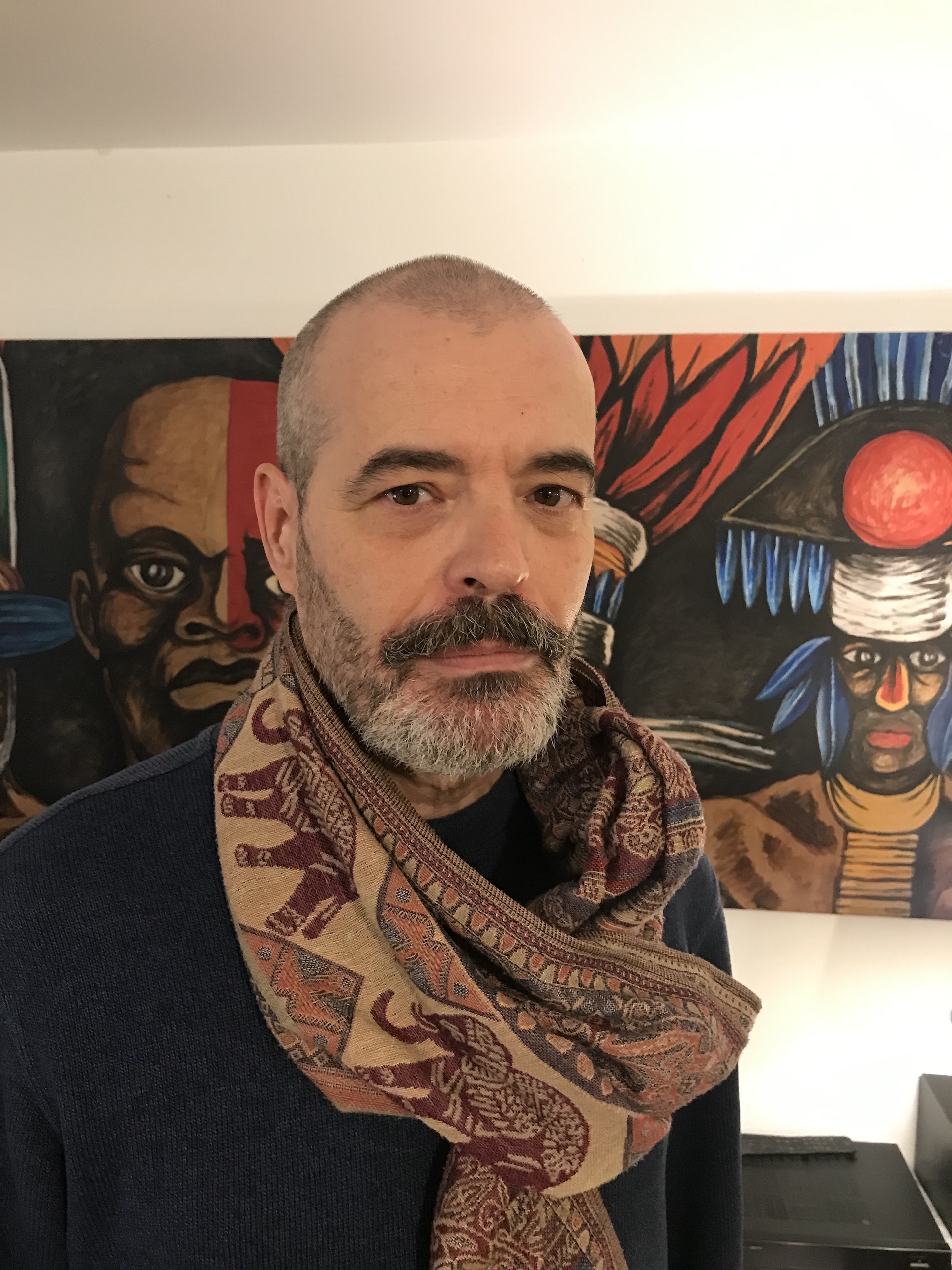
AN EXPERIMENTAL FILMMAKER’S PRODUCTION TECHNIQUES
To make the film, Perez shot actors on green screen, and then hand-painted and composited layer upon layer of elements, to create an organic, hand-made look. For some of the fire and explosion effects, he used an AfterEffects plugin to create the right scale and timing, then painted over the frames to integrate them into the design and ensure that the visuals don’t look digital.
The painterly imagery and rich textures make The Drowned an unmistakably “animated” film, but Perez doesn’t consider himself an animator. He calls himself an experimental filmmaker and uses lighting effects and camera moves seldom seen in animation, often creating scenes by combining photographs, real-life reference objects, and the texture library he has been building for decades. The complex overlapping layers of still and moving imagery, captured from multiple sources, enhance the magical dreamlike quality of the story. Sound and music from Yann Coppier add still more complexity and depth, washing over the audience with an immersive, watery, mysterious quality.
The film also reflects compositions and motifs from artists and filmmakers who inspire Perez and is infused with his own experiences and emotions. The final product, although derived from a place he doesn’t live and a book he didn’t write, is deeply personal and powerful.
BRINGING IT HOME
The Drowned has taken many years to realize. From the initial conversation between Perez and Carsten Jensen in 2013 to the finished film in 2021, the world has changed. The film received little support during the initial years and was a labor of love. When it was finally finished, Perez took the film and a projector to Jensen’s home to show him the final product. The author was profoundly moved, saying:
“We, the drowned is a historical novel, built on excessive research, about a small maritime town with an unusual destiny. But at the same time, it is the story of dreams and omens, about farewells and loss, about a small town overwhelmed by war and too many sailors that never returned home. We, the drowned is also a novel about an entirely different dimension of existence than what is portrayed in everyday realism. With a focus on the dreams in the story, Luc Perez’ vision is a surprising interpretation of moving, fierce, and poetic imagery. Perez has gone all the way into the heart of the novel, opening even the author’s eyes in the process. I will never again be able to look at my novel in the same way. The images I had on my retina writing We, the drowned have been replaced by Luc Perez’ magical, promising visual poetry.”
The Drowned will be appearing at film festivals and on online platforms, but will also be featured at the Maritime Museum in Marstal. In 2022, Luc Perez and Carsten Jensen will be performing a tour of libraries in Denmark where they present the film and discuss the book.
Collaborators

WeAnimate Magazine is dedicated to all the people who animate and make things, lines, and ideas come to life.
WeAnimate ApS is founded and owned by The Danish Animation Society (ANIS) www.anis.nu
Tell us what you think? Tell us at hello@weanimate.dk | #weanimate | our Privacy Policy



